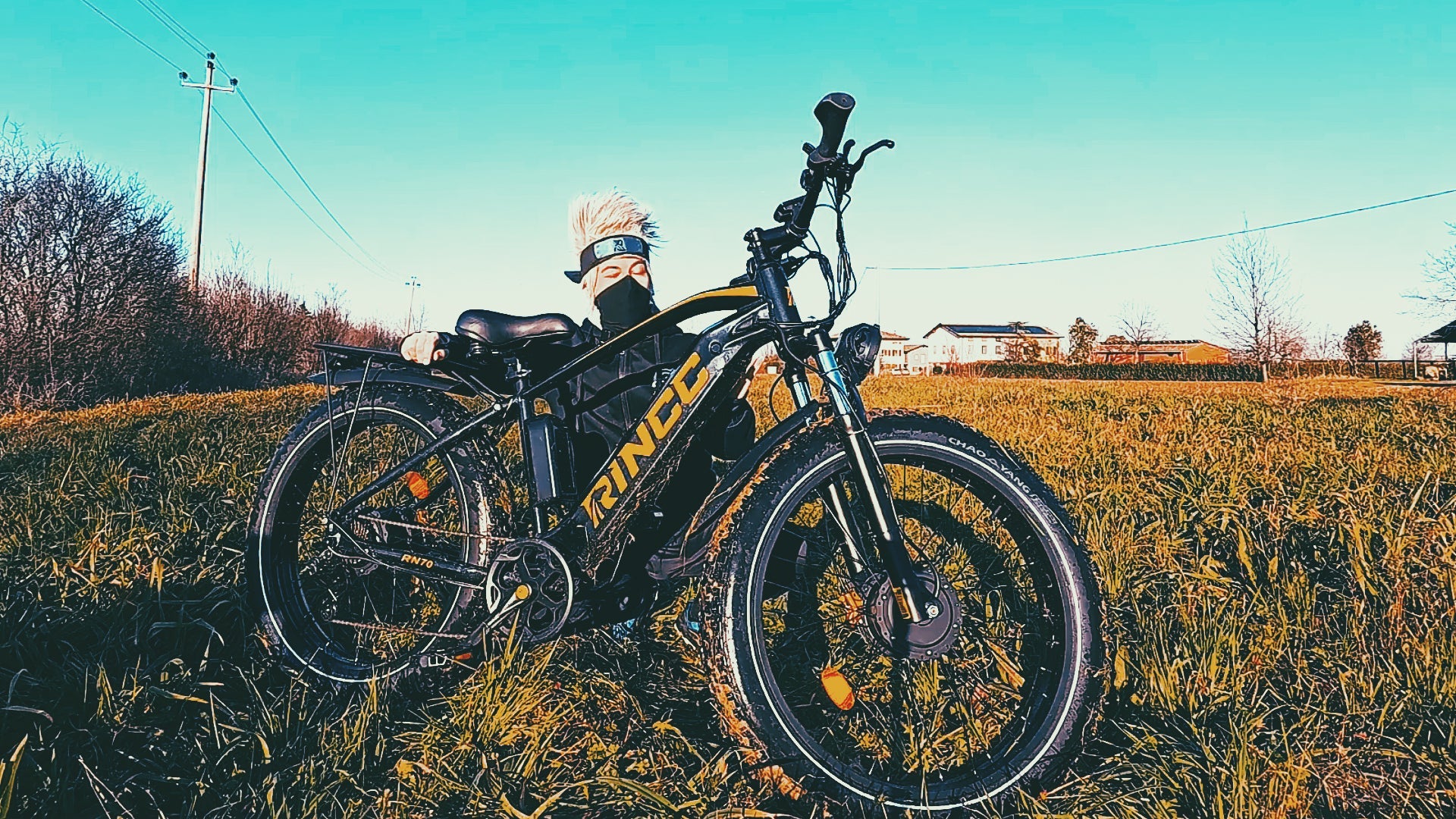Electric bikes (e-bikes) have revolutionised personal transportation by combining traditional cycling with electric propulsion. A common question among potential e-bike users is: "How fast can an electric bike go?" The answer varies based on several factors, including motor power, battery capacity, bike design, terrain, rider weight, and legal regulations.
Factors Influencing E-Bike Speed
1. Motor Power
The motor is a primary determinant of an e-bike's speed. E-bikes typically feature motors ranging from 250W to over 750W. Higher wattage motors can deliver more power, potentially increasing the bike's top speed. For instance, the Rincc RN70 is equipped with dual 750W motors (totaling 1500W), providing substantial power for off-road adventures.
2. Battery Capacity
Battery voltage and amp-hour (Ah) ratings affect how much power can be delivered to the motor. A higher voltage battery can assist in achieving higher speeds by supplying more power. For example, a 48V battery generally enables higher speeds than a 36V battery. However, while larger-capacity batteries allow for longer durations at higher speeds, they do not necessarily increase the bike's top speed and can add weight, potentially affecting agility.
3. Bike Design
Aerodynamics, tire size, and overall weight play significant roles in an e-bike's speed. Aerodynamic designs reduce air resistance, larger tires can cover more distance per rotation, and lighter bikes require less power to move quickly. Materials like aluminium and carbon fibre are commonly used to construct lightweight yet sturdy frames.
4. Terrain and Conditions
The type of terrain and weather conditions impact e-bike speed. Smooth, paved surfaces allow for higher speeds, while rough terrains like trails with rocks and roots can slow down the bike. Adverse weather conditions, such as rain or mud, can also reduce traction and necessitate slower speeds for safety.
5. Rider Weight
A rider's weight affects acceleration and top speed. Lighter riders may reach top speeds more quickly, as the motor doesn't have to work as hard to overcome inertia.
⚖️ Legal Speed Limits
E-bike speed regulations vary by region:
- Europe: E-bikes are limited to 25 km/h (15.5 mph) for pedal-assist models without a throttle.
-
United States: Federal law classifies e-bikes into three categories:
- Class 1: Pedal-assist only, with no throttle, and a maximum assisted speed of 20 mph.
- Class 2: Throttle-assisted with a maximum speed of 20 mph.
- Class 3: Pedal-assist only, with no throttle, and a maximum assisted speed of 28 mph.
It's essential to check local laws, as regulations can vary between states and cities.
Real-World Speeds of Rincc E-Bikes
Rincc offers a range of e-bikes designed for various purposes, each with specific speed capabilities:
Rincc RN70
- Motor: Dual 750W motors (1500W total)
- Top Speed: Up to 50 km/h (31 mph) in dual-drive mode
- Features: 26-inch fat tires, Samsung 48V 20Ah battery, hydraulic disc brakes
- Ideal For: Off-road adventures and tackling challenging terrains
Rincc R200
- Motor: 750W brushless motor
- Top Speed: 25 km/h (15.5 mph)
- Features: 20-inch fat tires, 48V 15Ah battery, foldable design
- Ideal For: Urban commuting and riders seeking portability
Rincc RN50
- Motor: 750W brushless motor
- Top Speed: 25 km/h (15.5 mph)
- Features: 29-inch all-terrain tires, 48V 15Ah battery, Shimano 21-speed gears
- Ideal For: Versatile riding across various terrains
Modifying E-Bikes for Higher Speeds
Some enthusiasts consider modifying their e-bikes to achieve higher speeds by:
- Upgrading the Motor: Installing a more powerful motor can increase speed but may strain other components.
- Enhancing the Battery: A higher voltage battery can provide more power, potentially increasing speed.
- Adjusting Controller Settings: Tweaking the bike's controller can alter speed limits, but this may void warranties and breach legal regulations.
Note: Modifications can lead to safety issues, legal complications, and may void manufacturer warranties. Always consult with professionals and understand local laws before making changes.
Safety Tips for High-Speed E-Biking
- Wear Protective Gear: Always use a helmet, gloves, and appropriate clothing.
- Regular Maintenance: Ensure brakes, tires, and electrical systems are in optimal condition.
- Be Mindful of Surroundings: Higher speeds reduce reaction time; stay alert to traffic, pedestrians, and road conditions.
- Adhere to Traffic Laws: Follow all local regulations to ensure safety for yourself and others.
Conclusion
Electric bikes offer a compelling blend of traditional cycling and modern technology, providing riders with enhanced speed and efficiency. Understanding the factors that influence e-bike speed—such as motor power, battery capacity, bike design, terrain, and legal regulations—is crucial for selecting the right model to suit your needs.
Rincc's diverse range of e-bikes caters to various preferences and requirements:
- Rincc RN70: Ideal for off-road enthusiasts seeking higher speeds and robust performance.
- Rincc R200: Perfect for urban commuters desiring portability and ease of use.
- Rincc RN50: A versatile option for riders traversing mixed terrains.
By considering these factors and adhering to safety guidelines, you can enjoy a safe and exhilarating e-biking experience.








Share:
How Does an Electric Bike Work?
How Do Pedal-Assist and Throttle Systems Function on E-Bikes?